Here’s a story about my adventures with vines. I’ve been on a mission to find the best vine for arbour shade. The journey so far…
Introduction to my adventures
An arbour divides our north facing garden behind our suburban Brisbane house to create a shady path from the laundry on the way to the clothes line. The challenge has been to grow vines that provide shade whilst not ending up like a giant bird’s nest. I was up for the adventure with vines!
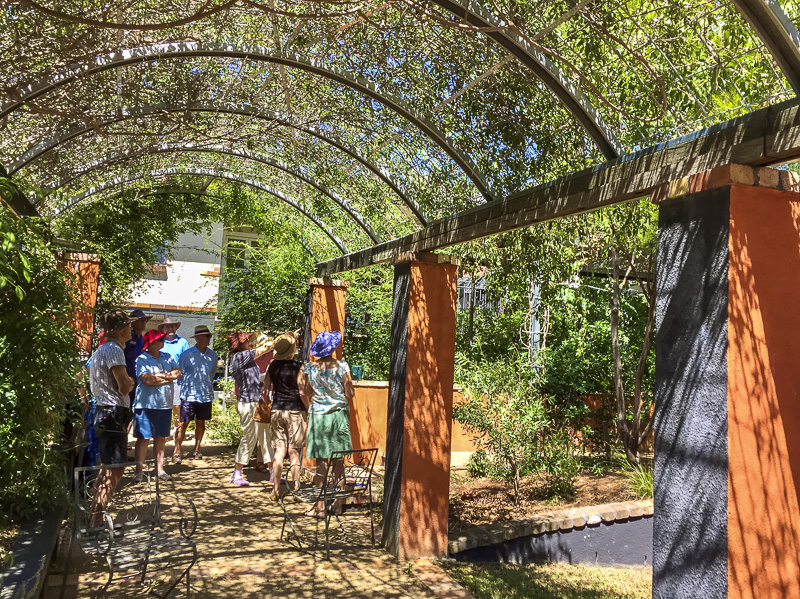
After seeing the floriferous display of Pandorea pandorana alba on the web, I thought I was onto a white winner.
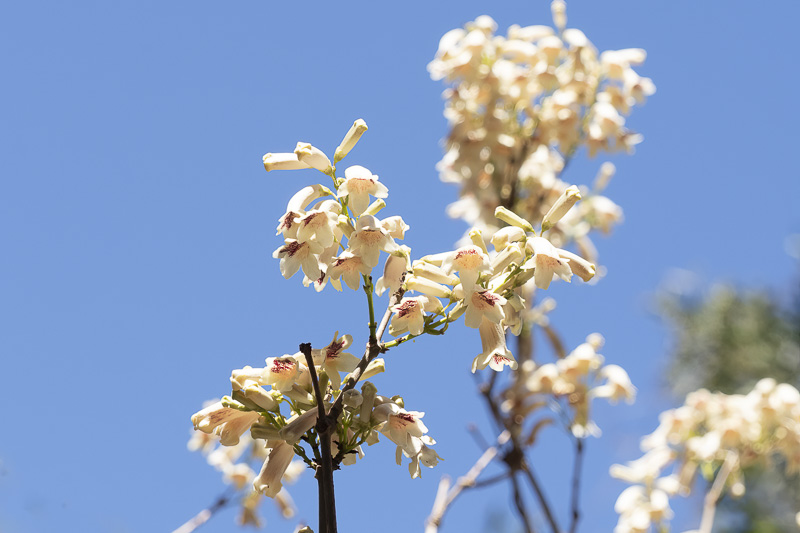
I duly bought three plants and started to train them up plastic trellis secured loosely around the metal posts. The idea was, that with the help of the vines, these posts would eventually take on the proportions of the block columns on the opposite side of the arbour.
Oh dear – wrongly labelled plants!
The first surprise was when the vines bloomed. I tromped back to the big green warehouse brandishing the label and the Pandorea jasminoides flower with its offending pink hues. To the store’s credit they sourced plants to match the label and P. pandorana entered the race to the top.

The P. pandorana vines were planted midway between the others so they needed a string to twine around on their way up. Quite by accident I learned that you can create wonderful plaits/braids/spirals with their stems. These retain their shape as the stems enlarge eventually fusing to forming a single shapely ‘trunk’. A fantastic effect.
Pandorea pandorana is an adventure in itself!
The adventures with vines continued. The P. pandorana grew like rockets and that was the problem. In the first two years, the new foliage provided an attractive light leafy cover. I was delighted by the first few cream trumpets, which while not overwhelming, turned out to be the only flowers I ever saw.
By year three, a twiggy scrum was accumulating and the vines were quickly morphing into giant messy toupee with slight green fringe. It was very hot and dry so I mulched the garden. Then I learned something else – these heavy vines are prone to collar rot. The ascending plaits braids and twirls that were thicker than my arm were left swinging in the breeze topped by a massive brown scraggy bird nest.
The backup plan for arbour shade
When things were not going as hoped, I started a back-up plan. I had romantic visions of Callerya megasperma flowers dangling in dappled shade. Having seen this vine monstering a 30 metre high tree, I was a bit wary, so to be on the safe side, I planted the two vines on the western side the block columns. That afternoon sun might have been a bit severe. Three years later and they each have about 10 leaves.
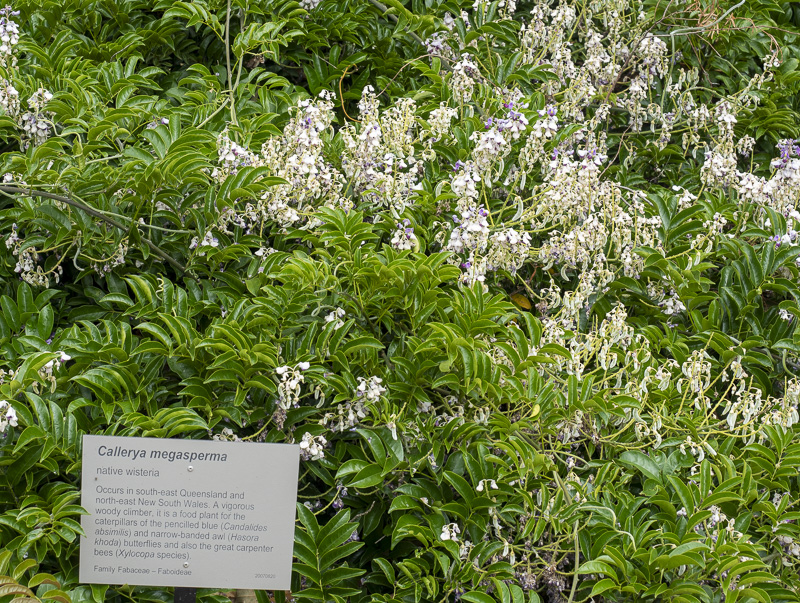
Magical accident as part of the adventure
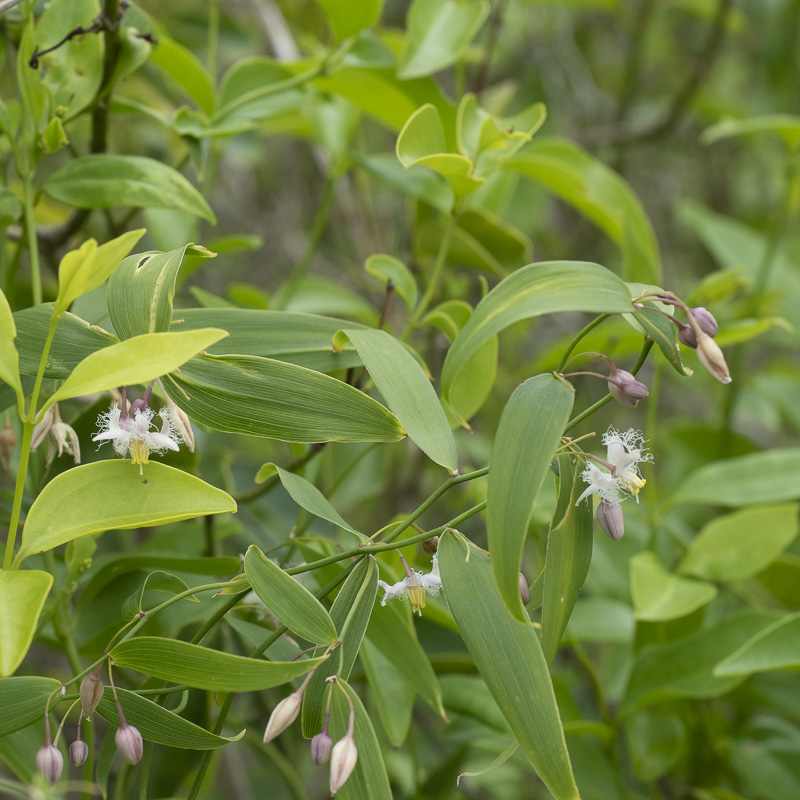
In the meantime, there was a magical accident at the southern end of the arbour courtesy of Geitonoplesium cymosum.
This delicate twining vine is remarkably adaptable. It had cloaked the end of the arbour with a soft green mantle, which, when in flower hummed with masses of stingless bees.
Individually they did not appear to be a long lived vine – maybe two to three years, but the number of seeds dropping ensures continuity.
If you plant a cluster somewhere accessible this hardy and trainable vine will reward you with an elegant green garland graced with delicate white flowers.
Pruning at height – not my idea of adventure!
By year four, I was clinging to the top of the arbour 12 feet up plucking at and picking off the birds nest back to the bare metal. The effect I was wanting is seen with the vegetation of Dolichandra unguis-cati or Cats Claw Creeper. I would never plant this. While Parsonsia straminea has a similar effect, I have seen what it is capable of and did not dare try it.
A vine sandwich – a new adventure?
At the side of our house is a wrought iron gate with a weldmesh canopy over which is Tecomanthe burungu. This vine puts on a stunning floral display for around three weeks of the year. It does not like the full sun and is forever heading back for the cover of the eaves. Watching this vine attempting to retreat from the sun started me thinking about whether what the arbour needed was a vine sandwich.
Over the years the P. jasminoides was notching up brownie points. It was green. It had survived the hot dry summer and it was not showing any signs of nesting. With Tecomanthe burungu now in the cross hairs, you could hardly call Pandorea jasminoides pink.
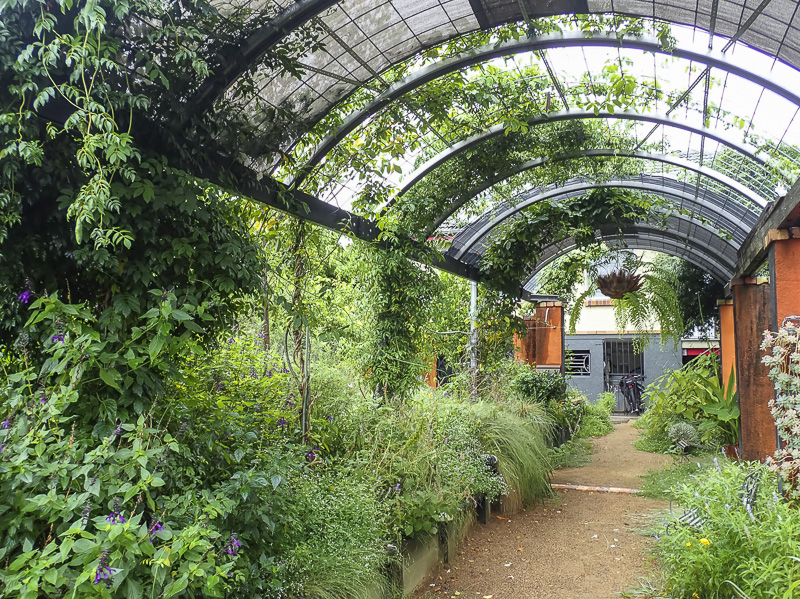
Shade cloth to the rescue
To provide more initial cover from the searing sun, shade cloth was attached to two separate sections of the arbour. I bought two Tecomanthe hilii from the big green warehouse. Each of the vines quickly made their way up to the top of the arbour. From here I have directed them to the protection of the shade cloth. In the meantime I have let the Pandorea jasminoides do whatever it wants with some added encouragement to get over the hump when it cannot get a grip on the sections with shade cloth.
The Tecomanthe hilli are proving quite vigorous. The first lot of flowers were larger and more spectacular than Tecomanthe burungu. Or so I thought. When I read the article about Tecomanthe in the quarterly Native Plants Queensland Journal I laughed out loud. The big green warehouse had done it again. This time I had been sold Tecomanthe dendophilia originating from Papua New Guinea! The flowers are drop dead gorgeous and forgiven for their northern origins. Should the Callerya megasperma ever make it to the top of the arbour, I will encourage these towards the areas without the shade cloth so that the flowers can one day dangle in the dappled light.
For more stories on planting in shade, see our full stories list of the Garden Design Study Group.
 Australian Native Plants Society (Australia)
Australian Native Plants Society (Australia)